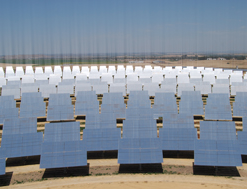U.S. utilities doubled solar installations in 2011


Rumors of solar power's demise are greatly exaggerated, according to a study by a solar power trade organization. U.S. utilities doubled installations in 2011 from 2010, also demonstrating a demand shift away from household installations.
The Solar Electric Power Association (SEPA) this week published findings demonstrating growing solar power adoption by utility companies. Most of the growth happened in the eastern United States. Here are some of the details:
- New solar power capacity increased 120 percent over 2010
- Utilities are proactively owning and contracting for more solar power
- More than 62,000 new interconnected PV systems were integrated by utilities in 2011
Notably, 39 percent of new solar projects were driven by utilities owning or contracting projects. There was a marked rise in public utilities buying in, and most installations were greater than 10 megawatts.
"This is a marked shift from a few years ago, when customer-owned, net-metered systems dominated installed solar generation," says Julia Hamm, SEPA president and CEO.
"Today, utilities are taking a greater role in the expansion of solar power in the United States. Much of this dramatic growth took place not just in the Southwest, traditionally the leader in solar power, but also in eastern states, and it took place on the systems of municipal utilities and rural electric cooperatives, as well as investor-owned utilities.
The 10 biggest U.S. utilities added more than 1,000 megawatts of solar energy capacity to the grid last year. In total, more than 240 utilities surveyed added 1,500 megawatts of new solar, which is equivalent to almost six natural gas power plants, SEPA said.
SEPA is a non-profit organization that's funded by membership dues and donations. Members include over 200 utility, electric service provider, manufacturer, installer, government, and researchers.
This post was originally published on Smartplanet.com